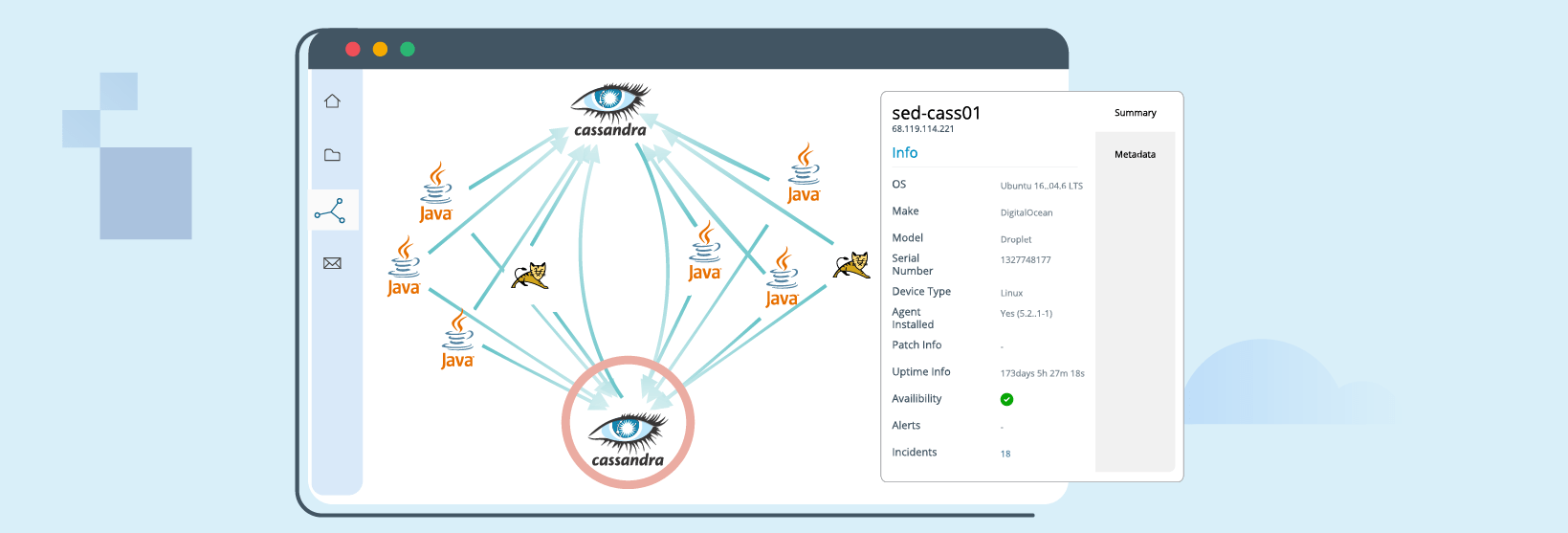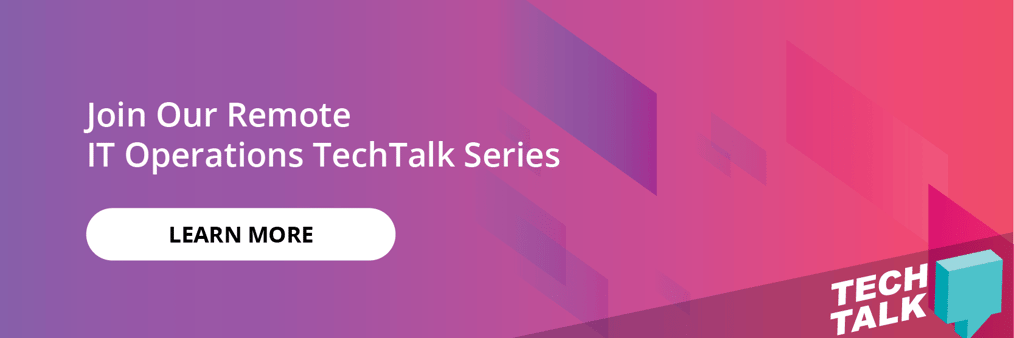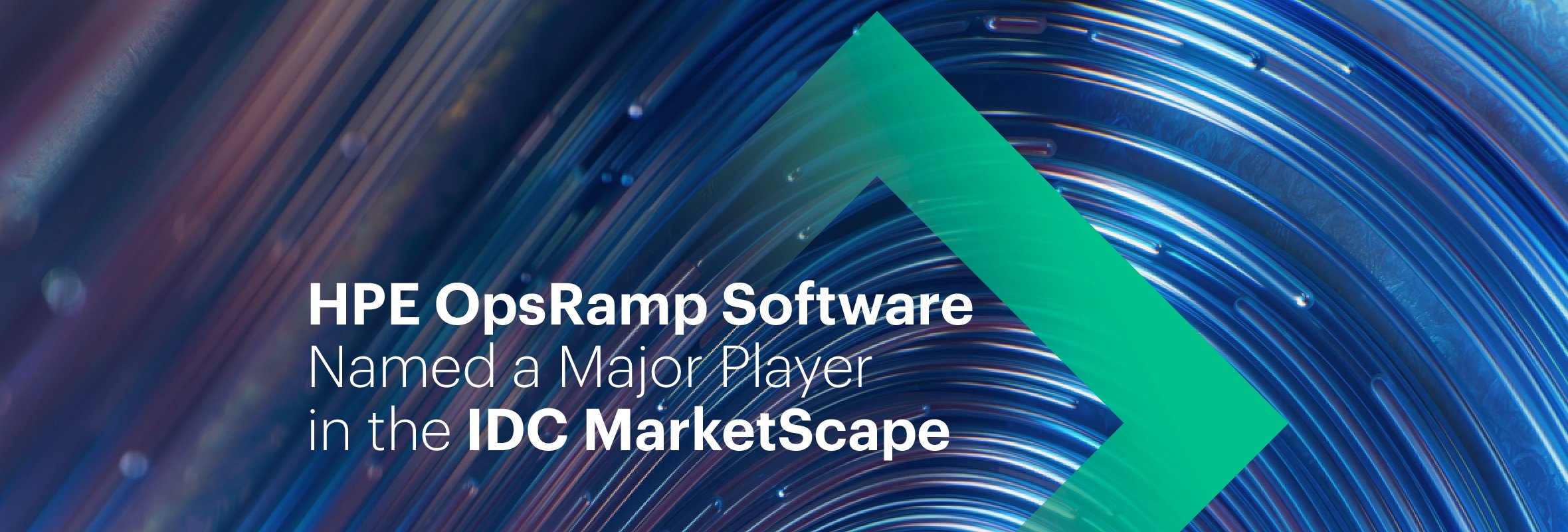In this article, learn:
- Why topology mapping is especially important in hybrid and multi-cloud environments;
- How OpsRamp delivers contextual visibility and dynamic control for the three leading cloud platforms;
- How OpsRamp delivers topology data for open source apps, containers, networks, and hypervisors.
Given that enterprises use a mix of physical, virtual, and cloud native infrastructure, it can be a struggle to maintain the availability and performance of digital services. OpsRamp's Topology Explorer delivers visual representations of dependency relationships between application components and hybrid infrastructure that feed into both service maps and service-centric AIOps. These real-time visualizations make it easier for digital operations teams to troubleshoot and detect root causes of incidents, improving MTTR and bringing business value faster.
OpsRamp provides contextual topology information for all discovered resources (layer 3 mappings) so that IT teams can access a 360-degree view of their enterprise application and infrastructure ecosystem. More importantly, OpsRamp delivers topology maps for public cloud services, containers, applications, hypervisors, network resources, and wide area networks, for a complete picture of IT service health.
Here is how OpsRamp’s topology maps ensure IT operations and DevOps teams can keep up with the demands of their modern distributed systems:
- Cloud Topology. By 2022, 90% of global enterprises will work with a combination of “on-premises/dedicated private clouds, multiple public clouds, and legacy platforms to meet their infrastructure needs.” Given that hybrid and multi-cloud infrastructure will play a critical role in meeting workload demands, IT operations teams need visibility into all the different public cloud services that their enterprise is currently using. Here’s how OpsRamp delivers contextual visibility and dynamic control for the three leading cloud platforms:
- Amazon Web Services. OpsRamp delivers real-time visibility and faster troubleshooting with dependency visibility for popular Amazon services such as Auto Scaling, Elastic Compute Cloud (EC2), Elastic Load Balancing (ELB), Redshift, Relational Database Service (RDS) and Virtual Private Cloud (VPC). Cloud operations teams can visualize infrastructure linkages for mission-critical services with OpsRamp’s cloud topology context and restore services promptly with native discovery, full-stack monitoring, dynamic alerting, and auto-remediation.
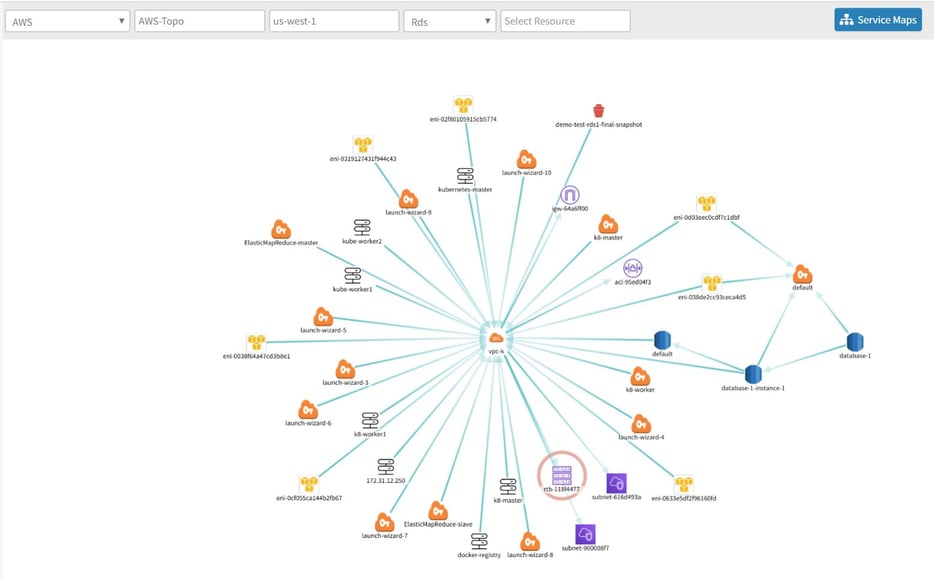
- Microsoft Azure. OpsRamp can automatically discover Azure resources and track dynamic changes in Azure cloud environments using topology maps. Site reliability engineers can track dependencies for discovered cloud resources such as Application Gateways, Content Delivery Networks, Load Balancers, Virtual Machines, and Virtual Networks. IT teams can leverage topology context for cloud incident management and gain extended visibility into the health of their Azure environments with topology views.
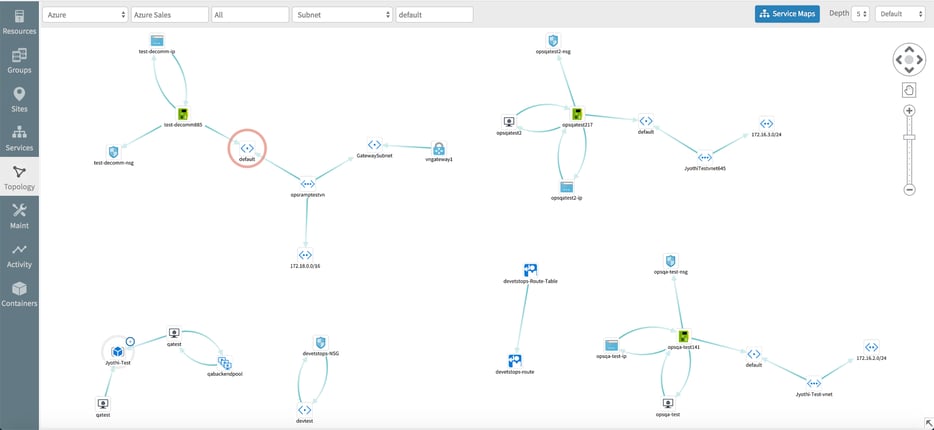
- Google Cloud Platform. OpsRamp’s topology maps for Google Cloud Platform (GCP) helps IT teams prevent service interruptions with relevant dependency context for GCP services such as App Engine, Compute Engine, Cloud DNS, Cloud Load Balancing, and Cloud Storage.
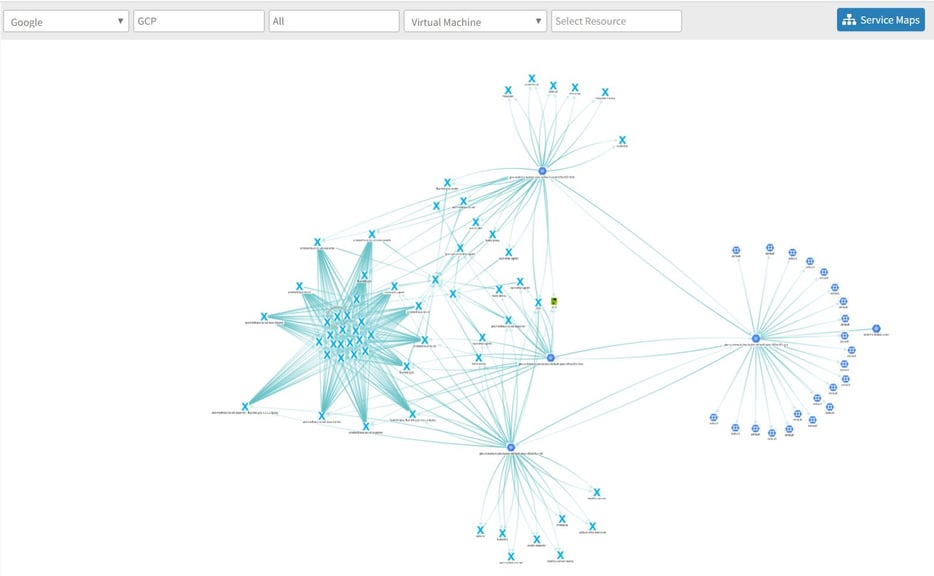
- Kubernetes Topology. DevOps teams can ensure that their cloud native services are running optimally with topology maps that deliver real-time context into the performance of Kubernetes clusters and underlying containers, pods, and nodes across on-prem and managed cloud Kubernetes deployments. Learn more about OpsRamp Kubernetes monitoring.
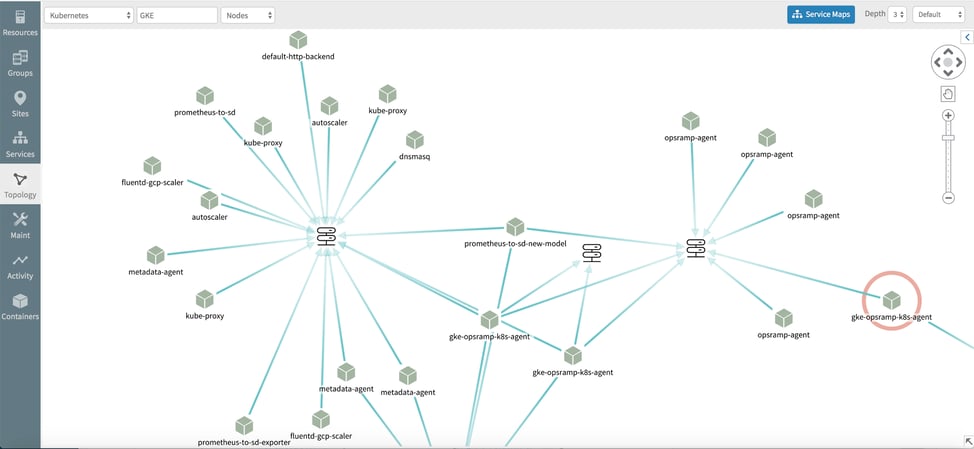
- Application Topology. OpsRamp not only discovers application services, processes, hosts, and topology clusters but also establishes relationship maps for application components and supporting infrastructure. IT teams can access relevant topology context for 40 popular open source apps such as Apache, Cassandra, Couchbase, Docker, Hadoop, Kafka, Mesos, MongoDB, MySQL, Redis, Solr, and Zookeeper and resolve performance problems with end-to-end application server visibility. Learn more about OpsRamp application monitoring.
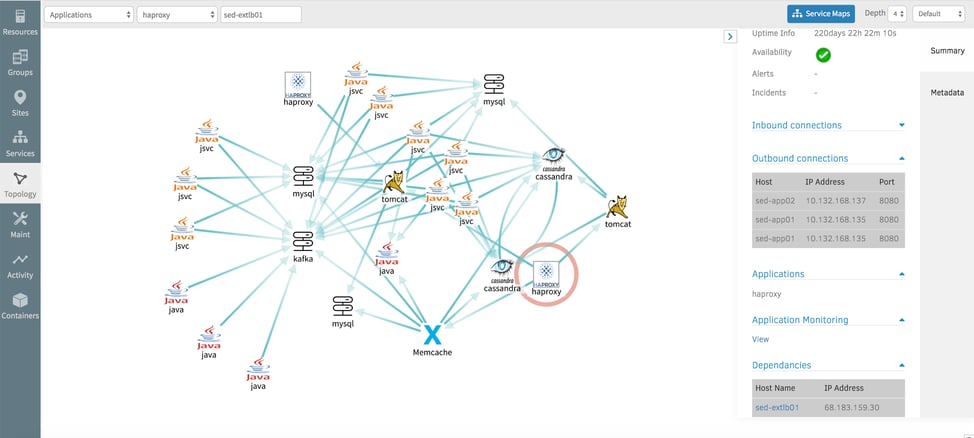
- Network Topology. OpsRamp supports commonly used protocols such as BGP, BRIDGE, CDP, LLDP, and OSPF so that IT operators can keep track of network connections across multiple enterprise deployments. Network automation teams can leverage cross-site topology to understand the connections between different datacenter sites or from a datacenter site to a public cloud environment. Learn more about OpsRamp network monitoring.

- Hypervisor Topology. OpsRamp offers dynamic discovery and real-time topology views for popular virtualization infrastructure such as VMware, Microsoft Hyper-V, and KVM hypervisors. Datacenter managers can control virtualization sprawl by visualizing relationships across virtual machines, hypervisor servers, and clusters. Learn more about OpsRamp virtualization monitoring.
_Topology.jpg?width=974&name=Blog_vCenter(hypervisor)_Topology.jpg)
Given that most workloads will run on hybrid and multi-cloud infrastructure, IT operations teams can use OpsRamp’s topology maps for enterprise applications, on-prem datacenters, and public cloud services to pinpoint performance issues in their business-critical services and drive faster root-cause(s) analysis for unanticipated service degradations.
Next Steps:
- Learn how to deliver intelligent infrastructure monitoring at scale.
- Check out the 7-step plan for successful AIOps implementations.
- Learn about OpsRamp’s commitment during COVID-19.
